LEE BUL
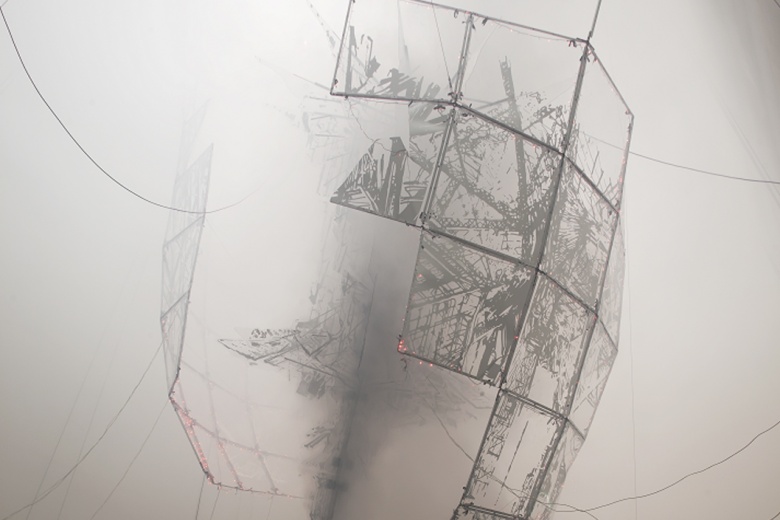
Né en 1964 à Séoul. Diplômé de sculpture de l’Université de Hongik à la fin des années 80. Vit et travaille à Séoul.
Born in Seoul in 1964. Graduated in sculpture from Hongik University during the late 1980s. Currently lives and works in Seoul.
Lee Bul commence par étudier la sculpture, mais s’intéresse très vite à d’autres techniques: à partir de la fin des années 80, elle entreprend de créer des formes volumineuses fréquemment associées à des performances. Revêtue de sculptures pourvues d’extensions diverses, Lee Bul se promène dans la rue ou dans des lieux publics, offrant au cours de ces performances une représentation d’un corps sujet aux mutations artificielles et parfois monstrueuses.
Durant les années 90, l’artiste continue de s’intéresser à la forme humaine, à la fois corps et entité sociale. Son travail aboutit à la fin de la décennie aux Cyborgs et Anagrams, séries de sculptures composées de membres tentaculaires, fantastiques et tortueux, ou d’éléments biomécaniques aux formes baroques. Par le biais des nouvelles technologies qui redessinent les frontières de l’existence humaine, les créations de Lee Bul élargissent la notion d’identité corporelle, laissant intentionnellement à l’interprétation personnelle les limites entre réalité, science et fiction. Lee Bul combine au gré des nécessités artistiques, son, vidéo et objets matériels issus d’un croisement entre sculpture et design.
Lee Bul, croisant les genres et les disciplines, poursuit sa réflexion provocante sur les thèmes de la beauté, de la corruption et du délabrement. Elle expose au Japon, au Canada, en Australie et dans plusieurs pays en Europe, s’affirmant dès lors sur un plan international comme l’une des artistes les plus audacieuses de la création contemporaine. En 1997, elle conçoit à la demande du Museum of Modern Art de New York une installation de poissons ornés de paillettes. L’exposition doit fermer avant la date prévue en raison de la polémique suscitée par l’odeur inévitable de l’installation. En réponse, Harald Szeemann, fidèle à son statut d’indé- pendant, lui commande la réplique exacte de la version originale pour la Biennale de Lyon dont il est le commissaire en 1997.
Si dans certaines de ses œuvres Lee Bul se laisse librement aller à imaginer un monde meilleur, envoyant par là même un message positif, d’autres sculptures sont chargées d’allusions à des personnages et des épisodes sombres de l’histoire coréenne. Thaw (Takaki Masao) (2007) est une sorte de sarcophage de glace pour le dictateur militaire Park Chung-hee, responsable de la modernisation brutale de la Corée du Sud entre 1961 et 1979. La sculpture intitulée Heaven and Earth (2007) rappelle une baignoire par sa forme et renvoie au corps humain par son échelle.
Une partie de l’univers de Lee Bul est le reflet des débats qui ont animé l’architecture depuis les débuts de la modernité dans leurs enjeux sociaux. L’architecture telle qu’elle fut pratiquée dans la Corée du Sud de Park Chung-hee était par exemple à la fois le fruit d’une volonté de modernisation autant qu’un instrument de l’exercice du contrôle de la population, quelque peu à l’image de ce qu’ont pu être les phalanstères occidentaux.
Source: Actuart, Fondation Cartier
Born in South Korea in 1964, Lee Bul initially studied sculpture, but quickly extended her practice to various media: in the late 1980s she began creating voluminous forms that were often paired with performances. Some of these sculptures, with stuffed appendages and extensions, were worn in performances in the streets and other public spaces, in representations of the body as a mutable, artificial, and sometimes monstrous construct.
The artist’s interest in the human form, simultaneously a body as well as a social entity, continued into the late 1990s when these themes were developed in her Cyborgs and Anagrams series, sculptures made of fantastical and twisted tentacle-like limbs or baroque bio-mechanical forms. These creations expand the idea of the physical body to include new technologies that redraw the frontiers of human existence, where the borders between reality, science, and fiction are intentionally left up to individual interpretation. Lee Bul gladly combines sound, video, and solid objects that are a cross between sculpture and design, according to her artistic needs.
While Lee Bul allows herself to go to great lengths to imagine an improved world in some of her works, thereby sending a positive message, other sculptures—despite their magnificent lightness of form, a common thread throughout the project—are charged with allusions to brutal events and figures in Korean history. Thaw (Takaki Masao) (2007) is a sort of ice sarcophagus for the military dictator Park Chung-Hee, responsible for South Korea’s brusque modernization between 1961 and 1979. Heaven and Earth (2007), a sculpture reminiscent of a bathtub that evokes the human figure due to its size, supports a stylized representation of Baekdu Mountain, the mythical birthplace of the Korean nation, on its edges.
Lee’s more recent works have similarly dual concerns; at once forward-looking yet retrospective, seductive but suggestive of ruin. Sculptures suspended like chandeliers, elaborate assemblages that glimmer with crystal beads and chains and mirrors, poignantly evoke castles in the air. The sculptures reflect utopian architectural schemes of the early 20th century as well as architectural images of totalitarianism from Lee’s experiences of military Korea.
Source : Fondation Cartier, ArtForum
TRAVAUX/WORKS :
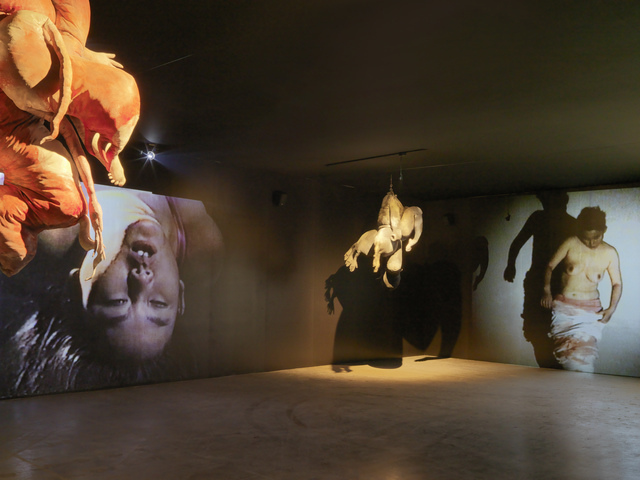
Performance Courtesy: Studio Lee Bul. © Stefan Altenburger Gwangju Biennale
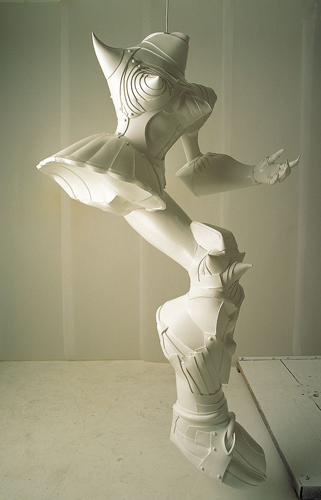
Courtesy: Studio Lee Bul Photo: Yoon Hyung-moon
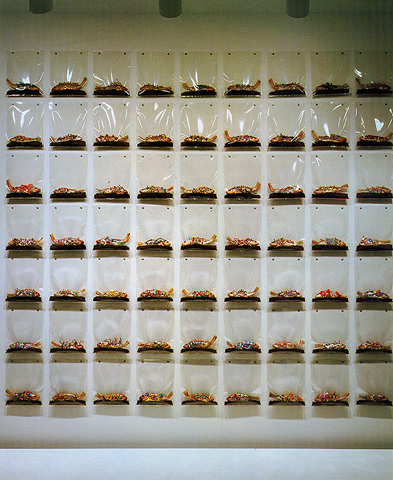
potassium, permangenate 360 x 410cm
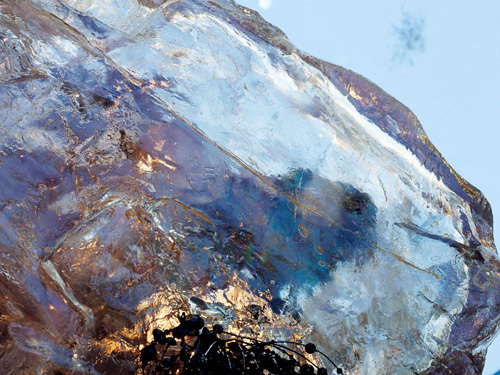
Photo: Patrick Gries
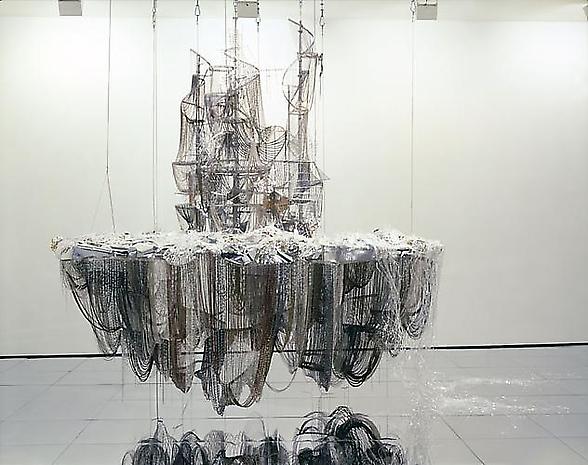
crystal, glass and acrylic beads on stainless-steel armature, aluminum and copper mesh, PVC, steel and aluminum chains
108 x 116 x 84 inches
274.3 x 294.6 x 213.4 cm
Collection of National Gallery of Canada, Ottawa
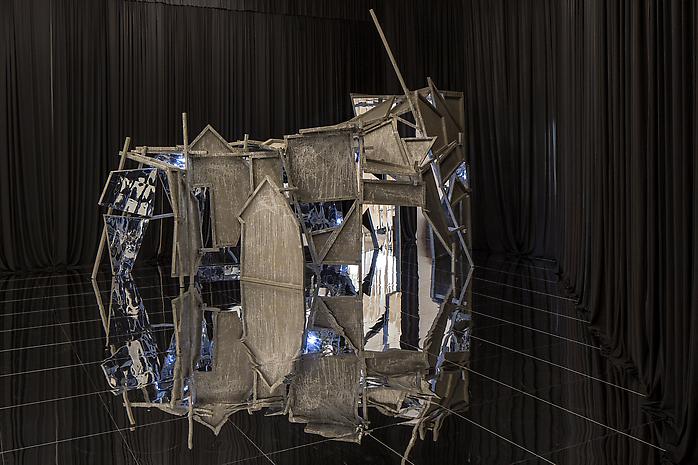
plywood on wooden frame, acrylic, mirror, alkyd paint
107.87 x 141.73 x 188.98 inches
274 x 360 x 480 cm
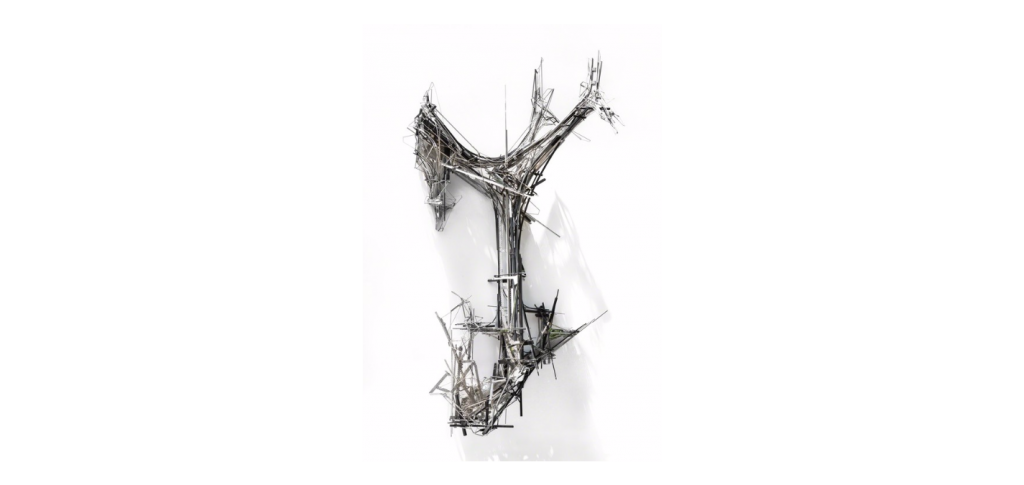
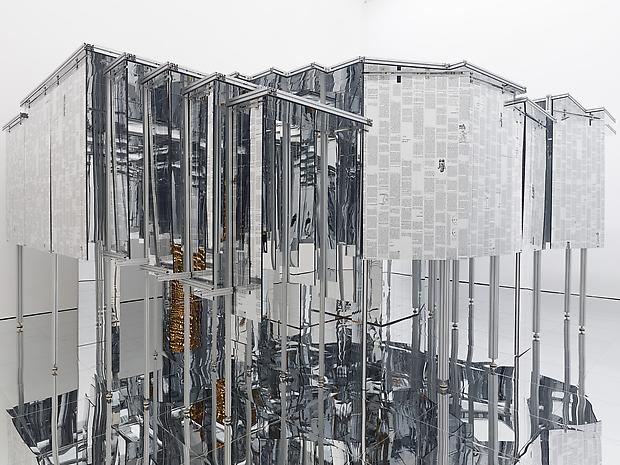
polycarbonate sheet, aluminum frame, acrylic and polycarbonate mirrors, steel, stainless-steel, mirror, two-way mirror, LED lighting, silkscreen ink 270 x 520 x 700 cm
